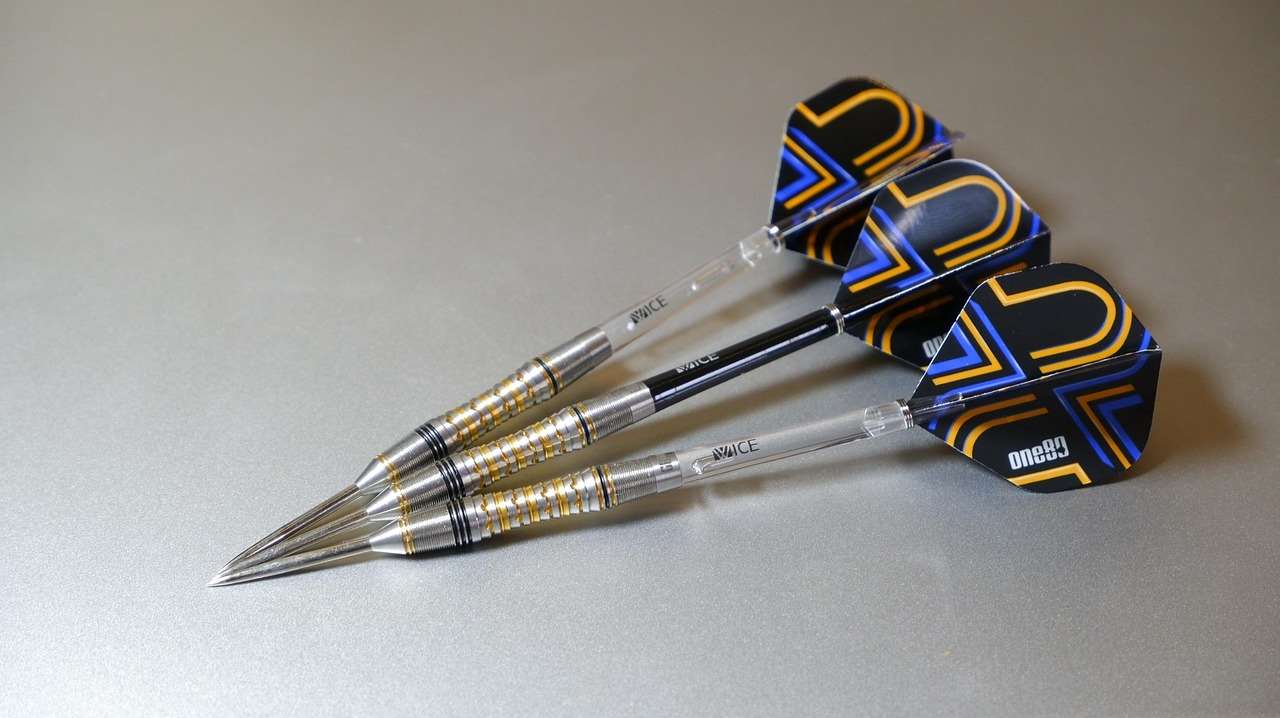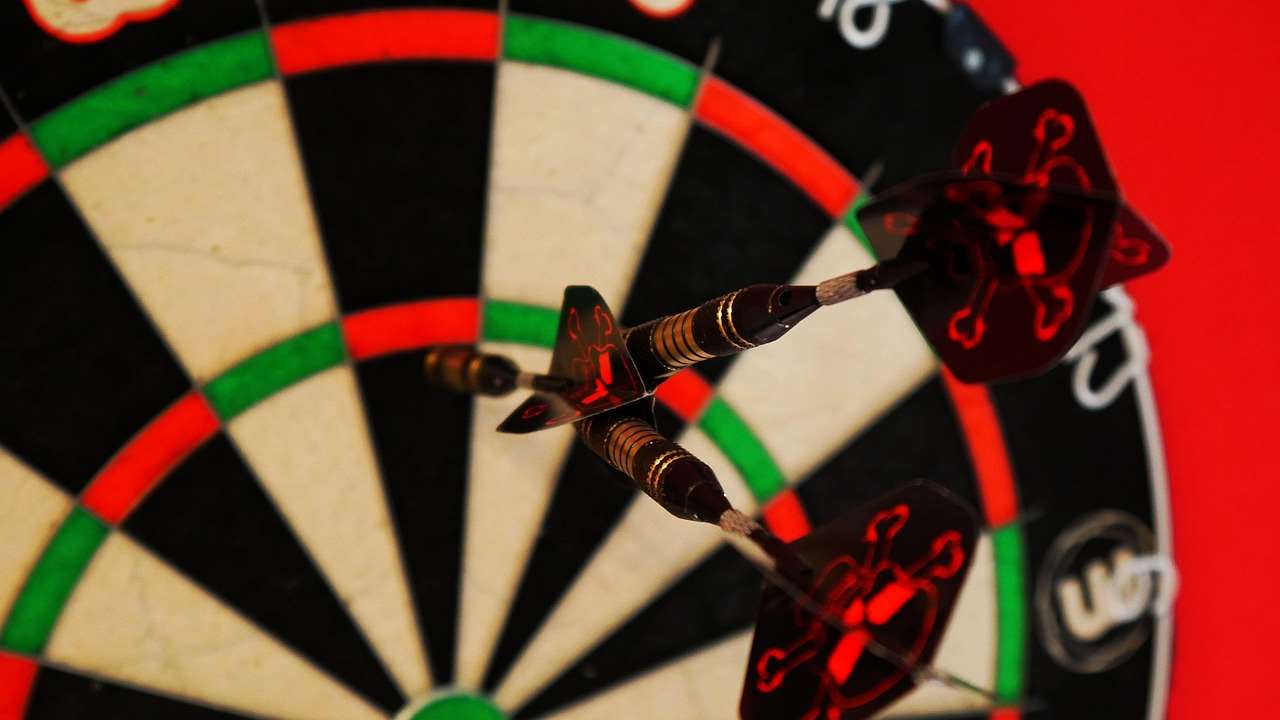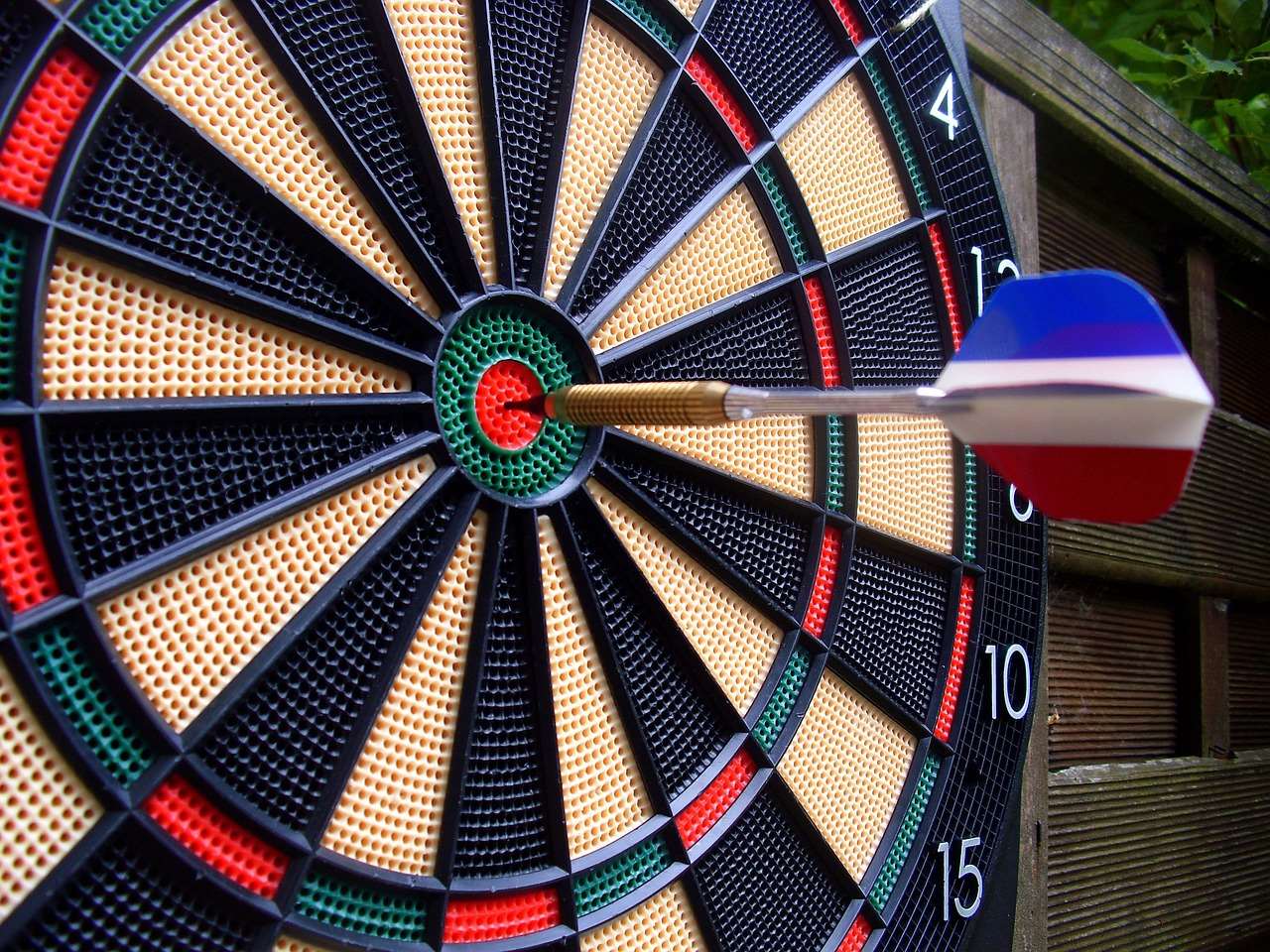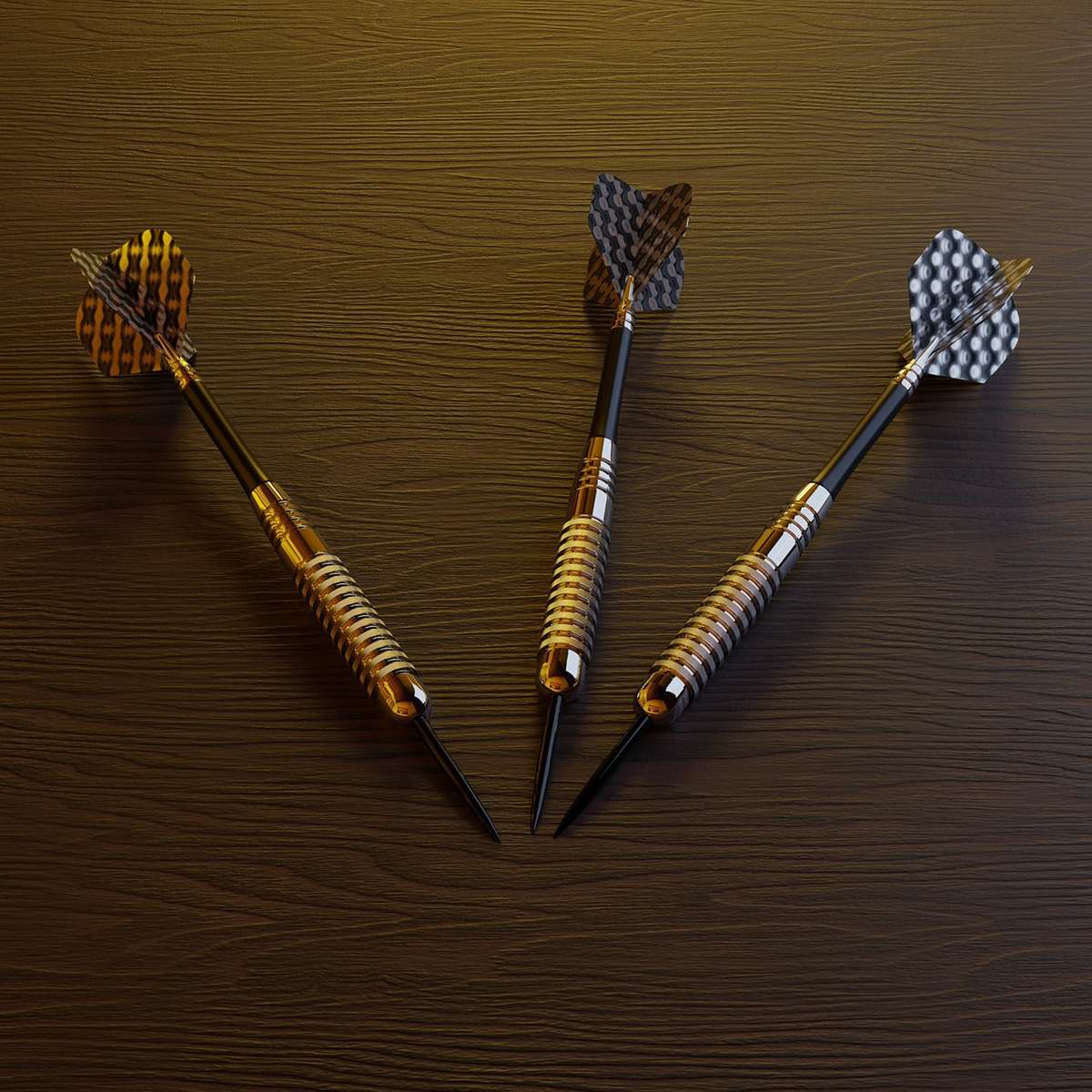Choosing the right dart point can significantly impact your game, and understanding the **different dart point textures** available is key to finding what works best for you. From smooth finishes to aggressive grips, this article explores the variety of options and helps you choose the right point to enhance your darting experience.
⚠️ Still Using Pen & Paper (or a Chalkboard)?! ⚠️
Step into the future! The Dart Counter App handles all the scoring, suggests checkouts, and tracks your stats automatically. It's easier than you think!
Try the Smart Dart Counter App FREE!Ready for an upgrade? Click above!
Understanding the Impact of Different Dart Point Textures
The texture of your dart point plays a crucial role in several aspects of your game. It affects how the dart enters the board, how well it stays in place, and even how easily it’s removed. Different dart point textures cater to different playing styles and dartboard materials, and understanding these nuances can help you improve your consistency and scoring.
A smooth point, for instance, is often preferred for its clean entry and minimal damage to the dartboard. On the other hand, a more textured point can provide a better grip, reducing the chances of bounce-outs, especially on older or harder boards. The best choice often comes down to personal preference and experimentation. You may also want to consider Choose Best Dart Equipment that complements your point style.

Types of Dart Point Textures
The world of dart points is surprisingly diverse. Here’s a look at some of the most common textures you’ll encounter:
- Smooth Points: These are the standard, often chrome-finished points found on many darts. They offer a clean entry and exit from the board. They are least likely to damage the dartboard fibers.
- Knurled Points: Knurling involves creating a series of small, raised ridges along the point’s surface. This provides increased grip, which can be beneficial for players who experience frequent bounce-outs.
- Grooved Points: Similar to knurled points, grooved points feature etched lines running along the point. These grooves offer a subtle increase in grip and can help the dart stay in the board.
- Sandblasted Points: Sandblasting creates a rough, matte finish. This type of point offers significant grip and is often preferred by players using harder dartboards. They can cause more wear and tear on the board compared to smoother points.
- Diamond-Cut Points: These points feature a series of small, diamond-shaped cuts along the surface, offering a blend of grip and board preservation.
- Micro-Grip Points: Micro-grip points have very fine, almost imperceptible textures. They offer a subtle increase in grip without being overly aggressive.
Each of these textures interacts differently with various dartboard materials. For example, a sandblasted point might be ideal for a very dense sisal dartboard but could cause excessive damage to a softer board.
Factors Influencing Your Choice of Dart Point Texture
Selecting the right point texture isn’t just about personal preference; several factors should influence your decision.
- Dartboard Material: As mentioned earlier, the type of dartboard you use is a primary consideration. Softer boards generally pair well with smoother points, while harder boards might benefit from more textured options.
- Throwing Style: Your throwing style also plays a role. Players with a strong, forceful throw might prefer points with more grip to prevent bounce-outs. Those with a softer touch might find that smoother points offer better control.
- Dart Weight and Balance: The weight and balance of your darts can affect how they stick in the board. A heavier dart might require a point with more grip, while a lighter dart might perform better with a smoother point.
- Personal Grip Preference: Ultimately, the best point texture is the one that feels most comfortable and natural in your hand. Experiment with different options to see what works best for you.
Experimentation is key. Try different point textures on your dartboard and pay attention to how they affect your dart’s entry, stability, and removal. Keep in mind that what works for one player might not work for another, so trust your instincts and find what feels right for you.

The Role of Point Length and Material
While texture is a key factor, it’s also important to consider the length and material of your dart points.
- Point Length: Dart points typically range from around 25mm to 41mm. Longer points generally offer a more secure hold in the board, while shorter points can provide a cleaner release. Experiment to find the length that suits your throwing style.
- Point Material: Most dart points are made of steel, but there are variations in the type of steel used. Some points are coated with titanium or other materials to enhance durability and grip. Consider the material’s resistance to bending and breaking when making your choice.
The combination of texture, length, and material contributes to the overall performance of your dart points. By carefully considering these factors, you can fine-tune your setup to achieve optimal results.
Maintaining Your Dart Points
Proper maintenance is essential to ensure that your dart points perform their best and last as long as possible. Here are some tips:
- Sharpening: Regular sharpening is crucial for maintaining a good point. Use a dart point sharpener to remove burrs and create a sharp, consistent point.
- Cleaning: Keep your dart points clean to prevent the buildup of dirt and debris. Wipe them down with a cloth or use a specialized dart cleaning tool.
- Straightening: If your dart points become bent, use a dart point straightening tool to restore them to their original shape.
- Replacing: When your dart points become worn or damaged beyond repair, replace them with new ones.
By following these maintenance tips, you can extend the life of your dart points and ensure that they continue to perform optimally. Think about Are Premium Darts Worth It, and if better care is required for this.

Point Texture and Bounce-Outs
One of the primary reasons players experiment with **different dart point textures** is to reduce bounce-outs. Bounce-outs can be incredibly frustrating, especially in competitive matches. Here’s how point texture impacts bounce-outs:
- Grip and Hold: More textured points, such as knurled or sandblasted points, offer a better grip on the dartboard fibers. This increased grip can help the dart stay in the board, even with a less-than-perfect throw.
- Board Condition: The condition of your dartboard also plays a role. Older or harder boards tend to have tighter fibers, which can make it more difficult for darts to penetrate. In these cases, points with more grip can be particularly beneficial.
- Angle of Entry: The angle at which your dart enters the board can also affect the likelihood of bounce-outs. Points with more grip can help the dart stay in place, even if it enters at a slightly off angle.
While point texture can certainly help reduce bounce-outs, it’s not a magic bullet. Factors like your throwing technique, dart weight, and dartboard condition also play a significant role. But if you’re struggling with frequent bounce-outs, experimenting with **different dart point textures** is definitely worth a try.
Premium vs. Budget Dart Points: Is There a Difference?
Like with most dart equipment, you’ll find dart points available at a range of price points. But is there a significant difference between premium and budget dart points? The answer is nuanced.
- Material Quality: Premium dart points often use higher-quality steel or other materials that are more resistant to bending and breaking. This can translate to a longer lifespan and better overall performance.
- Manufacturing Precision: Premium points are typically manufactured with greater precision, resulting in more consistent textures and dimensions. This can improve the accuracy and consistency of your throws.
- Coating and Finishes: Premium points may feature advanced coatings or finishes that enhance grip, durability, or aesthetics.
However, that’s not to say that budget dart points are necessarily bad. Many affordable options offer perfectly acceptable performance for casual players. The key is to research and read reviews to find budget-friendly options that are known for their quality and durability. Remember, a good set of budget darts can still outperform a poorly chosen premium set. Check out Difference Budget Premium Darts for a better understanding.

Experimenting with Different Dart Point Textures
The best way to determine which dart point texture is right for you is to experiment. Here’s a practical approach:
- Purchase a variety of point textures: Start by buying a few sets of dart points with different textures, such as smooth, knurled, grooved, and sandblasted.
- Test each texture on your dartboard: Spend some time throwing darts with each type of point. Pay attention to how the dart enters the board, how well it stays in place, and how easily it’s removed.
- Record your results: Keep a log of your scores and observations for each point texture. Note any differences in bounce-out frequency, grouping, and overall feel.
- Analyze your data: After testing all the point textures, analyze your data to identify the one that consistently performs the best for you.
- Fine-tune your selection: Once you’ve identified a general texture preference, you can further refine your selection by experimenting with different point lengths and materials.
Remember, there’s no one-size-fits-all answer when it comes to dart point texture. What works for one player might not work for another. The key is to experiment, gather data, and find the point that best suits your individual throwing style and preferences.

Conclusion: Finding Your Perfect Dart Point Texture
Choosing the right dart point is more than just a matter of aesthetics; it’s about optimizing your performance and enhancing your overall darting experience. By understanding the **different dart point textures** available and how they interact with various dartboard materials and throwing styles, you can make an informed decision that helps you improve your consistency and scoring.
Experiment with different point textures, consider factors like dartboard material and throwing style, and remember to maintain your points properly. Whether you prefer the clean entry of a smooth point or the added grip of a knurled point, the perfect point is out there waiting to be discovered. Now that you’re armed with this knowledge, head to your local dart shop or browse online retailers and start experimenting. Your perfect dart point awaits! Time to Buying Guide Budget Premium Dart Sets for the best darts that will work with the points you choose.
Hi, I’m Dieter, and I created Dartcounter (Dartcounterapp.com). My motivation wasn’t being a darts expert – quite the opposite! When I first started playing, I loved the game but found keeping accurate scores and tracking stats difficult and distracting.
I figured I couldn’t be the only one struggling with this. So, I decided to build a solution: an easy-to-use application that everyone, no matter their experience level, could use to manage scoring effortlessly.
My goal for Dartcounter was simple: let the app handle the numbers – the scoring, the averages, the stats, even checkout suggestions – so players could focus purely on their throw and enjoying the game. It began as a way to solve my own beginner’s problem, and I’m thrilled it has grown into a helpful tool for the wider darts community.